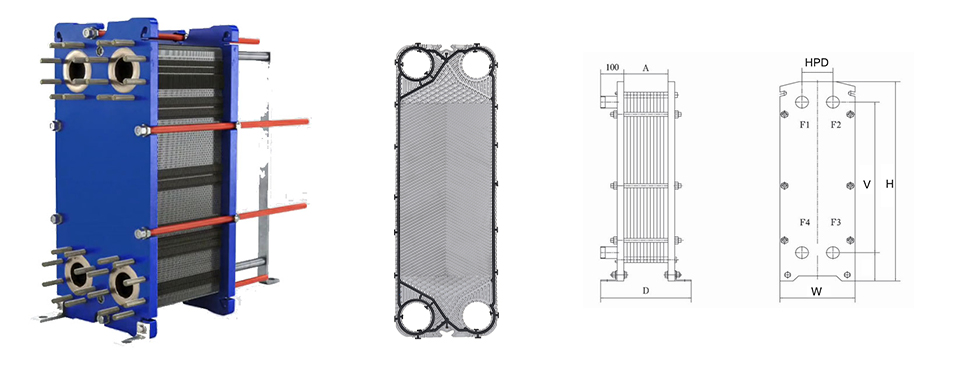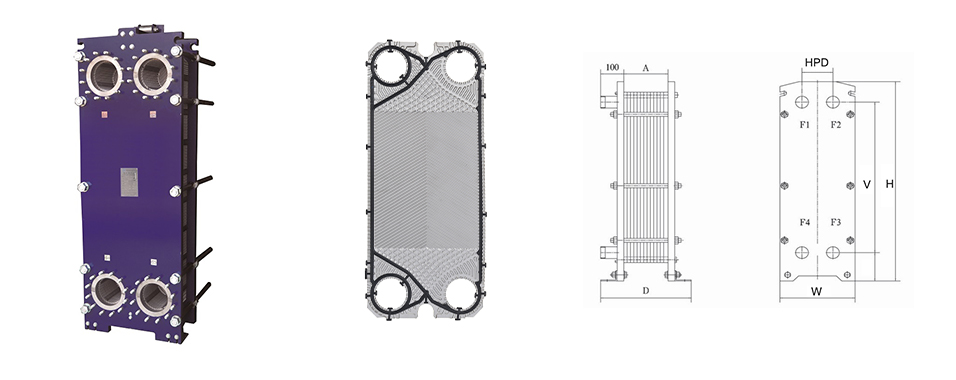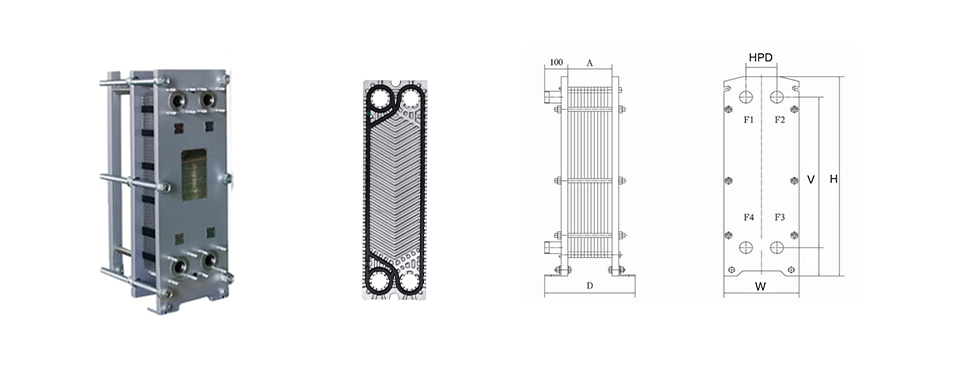Sondex heat exchanger plates tube wall blockage and cause analysis
(1) Circulating water becomes blocked due to heat and scaling
The calcium-magnesium bicarbonate in the water decomposes into calcium carbonate precipitate and soft amorphous magnesium hydroxide when heated. Some of these sediments adhere to the heating surface of the heat exchanger with greater heating strength to form hard or soft scale, and the other part is suspended in the circulating water and circulates. When the water circulation on the heating surface of the heat exchanger is poor, the flow rate is low or becomes "dead water", these suspended solids will be deposited on the surface of the heat exchanger to form secondary scale. Since the thermal conductivity of scale is 10 to 800 times lower than that of steel plates, the heat transfer efficiency of the heat exchanger is greatly reduced. (2) Impurities enter the pipe network and cause blockage
Impurities will inevitably enter the pipe network during the construction of the pipe heating network. When the heating network is running, the impurities enter the heat exchanger with the circulating water and cause blockage, reducing the thermal efficiency of the heat exchanger.
(3) The inner wall of the pipeline is rusted, forming rusty mud and causing blockage
Since the circulating water of the primary and secondary networks has not undergone deaeration treatment, the corrosion of metal in the pipeline by oxygen is inevitable, especially during the summer shutdown period, the water temperature in the pipeline is relatively low, and the oxygen solubility in the water is relatively high, which relatively aggravates the corrosion of the pipeline. , Showing point and flake corrosion. When the heating network is running, the rust enters the heat exchanger along with the circulating water and combines with the scale on the surface of the heat exchanger plates to form chocolate-colored scale flakes, resulting in a decrease in thermal efficiency.
sondex heat exchanger plates
The calcium-magnesium bicarbonate in the water decomposes into calcium carbonate precipitate and soft amorphous magnesium hydroxide when heated. Some of these sediments adhere to the heating surface of the heat exchanger with greater heating strength to form hard or soft scale, and the other part is suspended in the circulating water and circulates. When the water circulation on the heating surface of the heat exchanger is poor, the flow rate is low or becomes "dead water", these suspended solids will be deposited on the surface of the heat exchanger to form secondary scale. Since the thermal conductivity of scale is 10 to 800 times lower than that of steel plates, the heat transfer efficiency of the heat exchanger is greatly reduced. (2) Impurities enter the pipe network and cause blockage
Impurities will inevitably enter the pipe network during the construction of the pipe heating network. When the heating network is running, the impurities enter the heat exchanger with the circulating water and cause blockage, reducing the thermal efficiency of the heat exchanger.
(3) The inner wall of the pipeline is rusted, forming rusty mud and causing blockage
Since the circulating water of the primary and secondary networks has not undergone deaeration treatment, the corrosion of metal in the pipeline by oxygen is inevitable, especially during the summer shutdown period, the water temperature in the pipeline is relatively low, and the oxygen solubility in the water is relatively high, which relatively aggravates the corrosion of the pipeline. , Showing point and flake corrosion. When the heating network is running, the rust enters the heat exchanger along with the circulating water and combines with the scale on the surface of the heat exchanger plates to form chocolate-colored scale flakes, resulting in a decrease in thermal efficiency.
sondex heat exchanger plates








